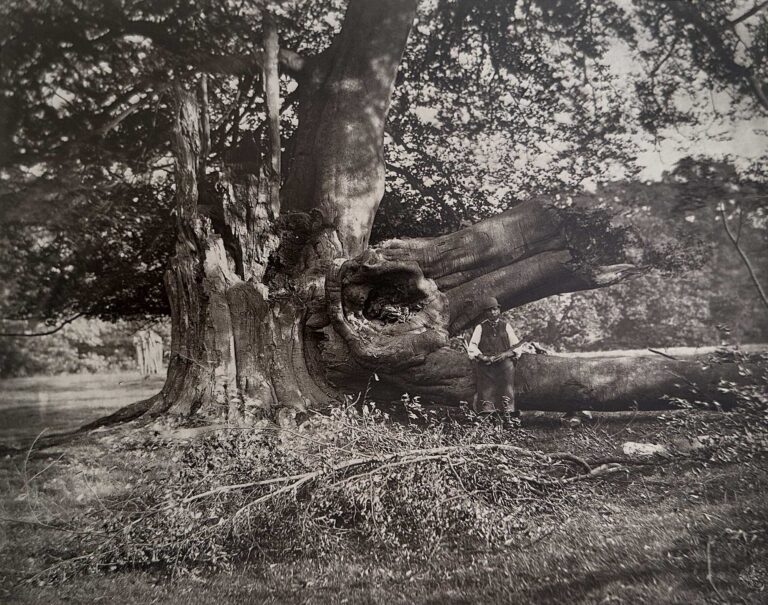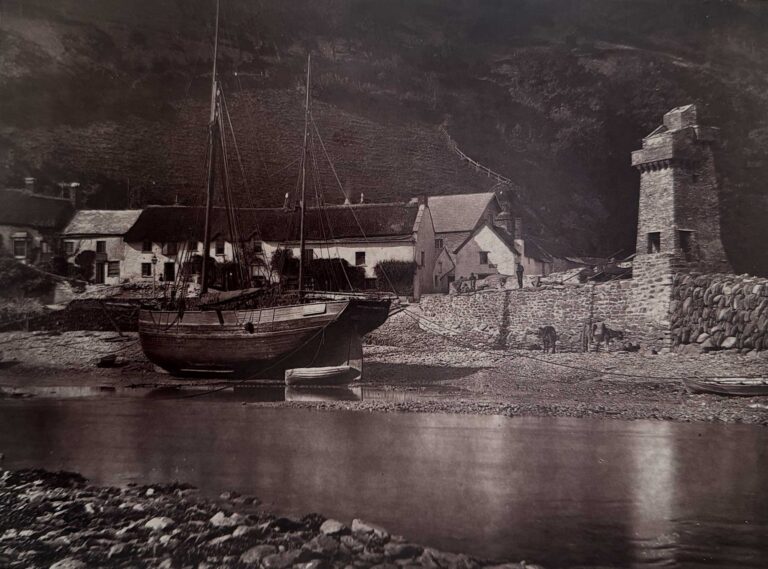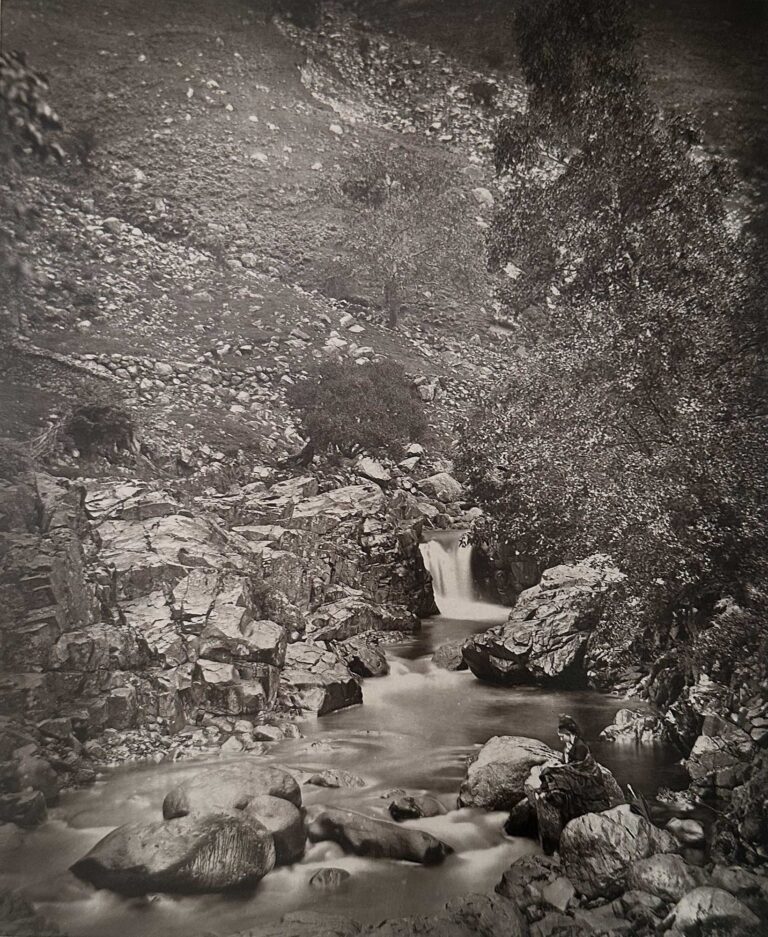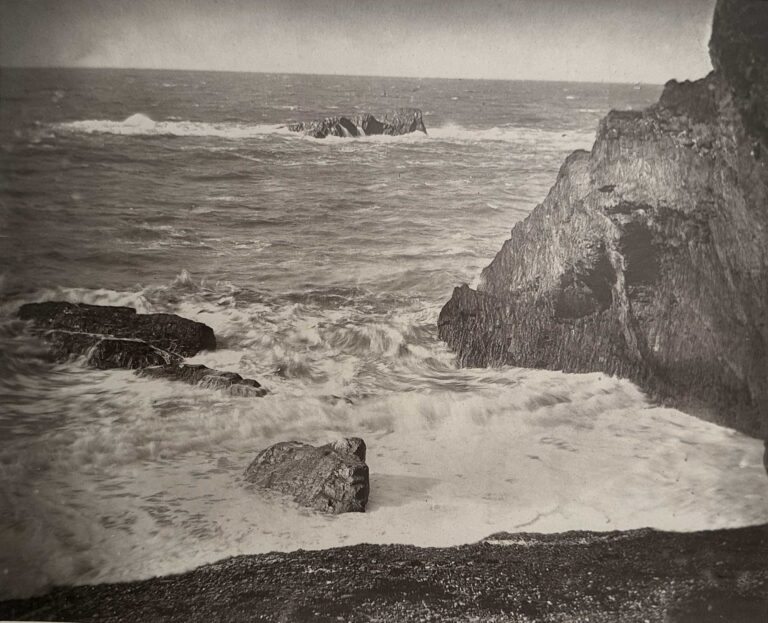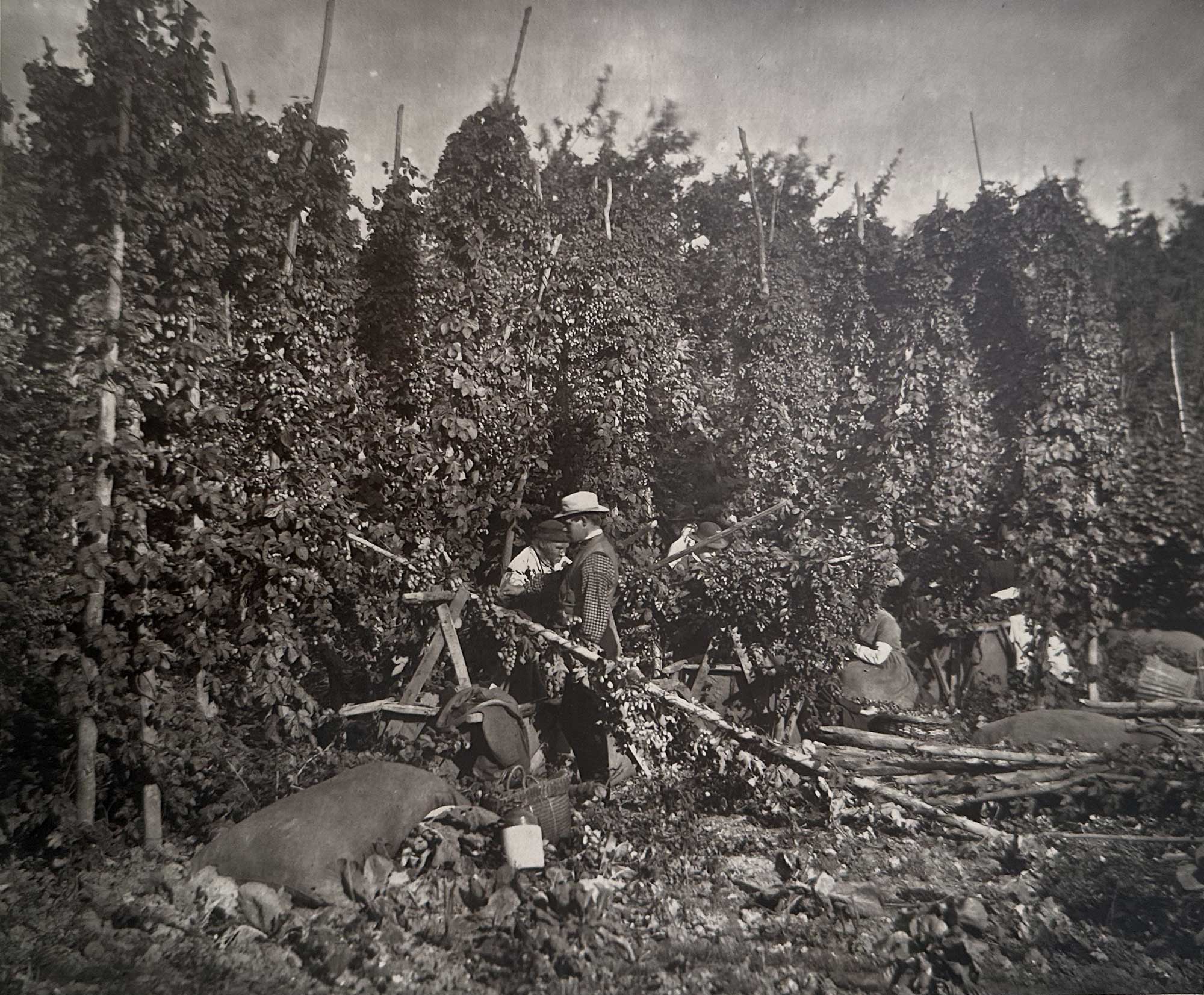
Hop-Picking in Kent
Descriptive letterpress printed opposite this photograph:
HOP-PICKING IN KENT.
“Let Autumn bold,
With universal tinge of sober gold,
Be all about me when I make an end.”⎯KEATS’ Endymion.
WHEN the harvest of the cornfields is over, in the counties of Kent and Sussex, a later and most important in-gathering has yet to be commenced -the September hop-picking. What the vintage is to Italy and France, the “hopping” is to southern England, and there are few scenes more picturesque, providing the weather be propitious, than a Kentish hop-garden during the picking season. We miss the rich purple colour of the ripened grape, but the graceful luxuriance of the “golding” hop wreath more than atones for its loss. Indeed, except in some parts of Italy where they have been artificially trained over trellis-work and picturesque arcades, we have never seen any vineyard so beautiful.
“Hopping” is the annual villegiatura of a large portion of the poorer classes in London and other provincial cities. From the Borough-not far from the Tabard Inn of old Chaucer- motley groups, representing every class of the lower stratum of London Society, take to the road, bound on another Canterbury Pilgrimage. But there were no hop-gardens in Chaucer’s time! Though certainly a native of our soil, as it is of many other countries (we have seen wild hops abounding in some parts of the valley of St. Nicholas en route to Zermatt), the cultivation of the plant was not introduced into this country until the early part of Henry VIII.’s reign, when some of the best varieties, still known as Flemish, were brought over from the Low Countries. By the end of the sixteenth century, Kent became spoken of as the great county of hops. There is an old couplet which says-
“Turkeys, carp, hops, pickerel, and beer,
Came into England all in one year.”
Our English name for the plant “Hop” is derived from the Anglo-Saxon hoppan, to climb. The botanical title, Humulus lupulus, from humus, fresh earth, and Lupus salictarius, an ancient name for it, meaning willow-wolf, being destructive to willows, which it grew with and choked up. Formerly the young shoots of the wild hop used to be brought to market to be cooked as asparagus; the stalk and leaves dye wool yellow; and a cloth is manufactured from the stems in Sweden.
After picking, the hops are dried in “oasthouses,” a process requiring great care, one result of which–most grateful to Kentish visitors- is, that throughout September the whole country-side is everywhere perfumed with the delicious fragrance of the drying hops!
